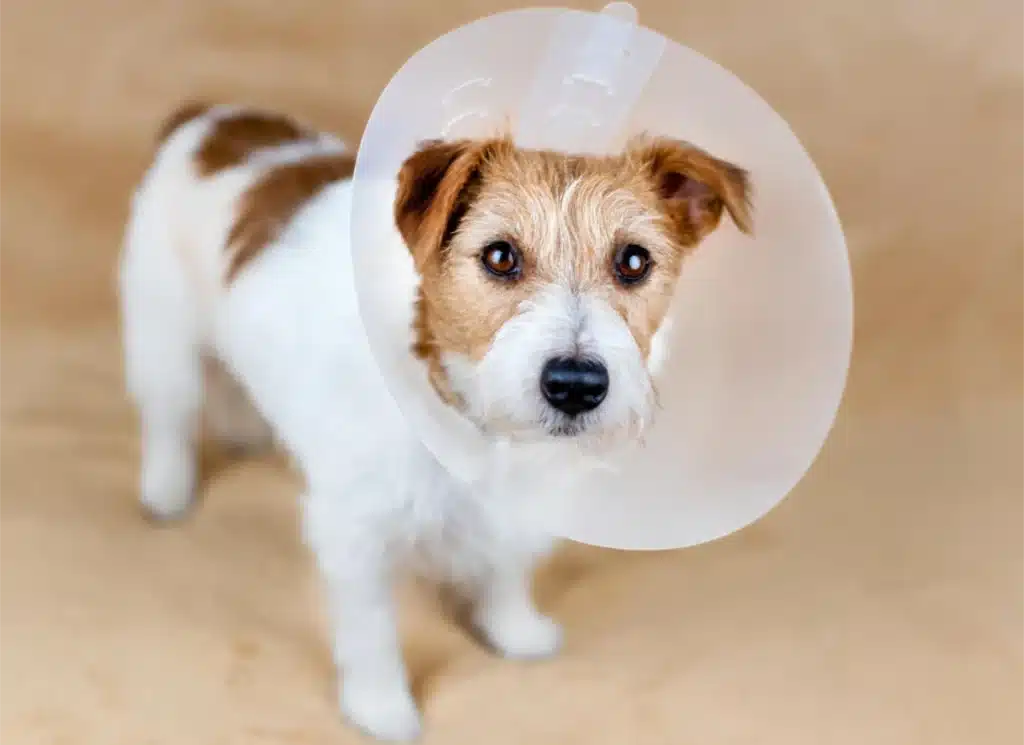What to Expect After Your Dog’s De-Sexing Surgery

De-sexing your pet is a vital step in ensuring their long-term health and well-being. At Vetmed, we understand that the thought of surgery can be daunting, but we aim to make the process as smooth and stress-free as possible for both you and your furry friend. Understanding the benefits. Here’s a detailed look at the benefits of this important procedure, and what to expect after your dog’s de-sexing surgery.
Benefits of De-Sexing Your Pet
De-sexing, typically performed between 5 and 6 months of age, has numerous health and behavioural benefits. Your Vetmed veterinarian will discuss the best timing for your pet’s surgery based on their breed and individual needs. Here are some key advantages:
For Male Dogs:
- Reduced Dominance Aggression: Helps in managing and reducing aggressive behaviours.
- Prevents Prostate and Testicular Cancer: Significantly lowers the risk of these cancers.
- Prevents Hernias and Perianal Adenomas: Reduces the risk of hernias and tumours around the anus.
- Curbs Wandering: Decreases the likelihood of roaming, which can lead to fights or accidents.
For Female Dogs:
- Prevents Mammary and Ovarian Cancer: Greatly reduces the risk of these cancers.
- Prevents Pyometra: Protects against this life-threatening uterine infection.
- Manages Obesity/Weight Gain: Helps in maintaining a healthy weight.
The De-Sexing Procedure and Immediate Aftercare
When you bring your dog to Vetmed for their de-sexing surgery, rest assured that they are in expert hands. The procedure itself is quick and painless, performed under general anaesthesia. Here’s what to expect post-surgery:
- Recovery Monitoring: After the surgery, your dog will be monitored for about 2 hours to ensure they wake from anaesthesia without complications.
- Pain Management: We provide additional pain medication and detailed discharge guidelines to help you manage your dog’s comfort at home.
- The ‘Cone of Shame’: Your dog may come home sporting an Elizabethan collar (cone) to prevent them from licking the incision site.
Post-Surgery Care at Home
The first night after surgery, your dog might be quieter and less active. This is normal and part of the recovery process. By the next day, many dogs return to their usual energy levels, but it’s crucial to manage their activity to support healing.
Key Points to Remember:
- Limit Activity: Keep your dog calm and restrict their activity to leash walks and gentle play for about 7-10 days.
- Monitor the Incision: Check the surgical site daily for signs of infection, such as redness, swelling, or discharge.
- Prevent Licking: Ensure the cone stays on or use an alternative like a recovery suit to prevent your dog from licking the incision.
Follow-Up Care
Your dog’s sutures will need to be removed approximately 7-10 days post-surgery. During this follow-up visit, the vet will check the incision site to ensure it’s healing properly and address any concerns you may have.
Supporting Your Dog’s Recovery
The recovery period is an excellent time to bond with your pet and provide extra care. Here are some tips to support their recovery:
- Create a Comfortable Space: Set up a quiet, cozy area where your dog can rest undisturbed.
- Stay Calm and Positive: Your dog can sense your emotions. Staying calm and positive helps them feel secure.
- Provide Emotional Support: Gentle petting and reassuring words can help soothe your dog.
At Vetmed, we prioritise your pet’s health and comfort. While the thought of de-sexing surgery might be worrisome, knowing what to expect can make the process easier. With proper care and attention, your dog will recover quickly and continue to thrive, benefiting from the many health advantages that de-sexing offers. If you have any questions or concerns, our team is always here to support you and your furry friend.
Vetmed offers comprehensive pet care services at four clinic locations across the Eastern Suburbs and Northern Beaches, including Lindfield, Randwick, Forestville, and Northbridge.
